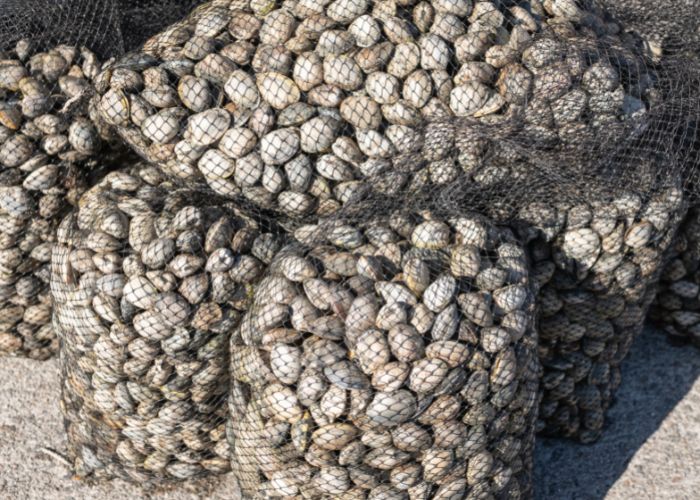VILAGARCía DE AROUSA – “Years ago we caught 10 kilos a day and today we don’t even get three”, said a seafood fisherman in the Arousa estuary, the richest shellfish estuary in all of Galicia to RTVE.
Shellfish collectors and biologists alike have warned for a long time that shellfish production is declining by leaps and bounds, especially in the Arousa estuary. They also called for measures to help the sector, but they never materialised. The losses suffered by seafood fishermen in 2021 are estimated at €10 million. And, furthermore, there is no light at the end of the tunnel.
Much fewer mussels and cockles
The mussel, one of the most prized shellfish caught here, is also one of the most scarce. In 2021, 158 tons were caught, while the average for the last 20 years stands at 547 tons. This is evident from data from the Platform for Fish Technology.
Then there’s the cockle. That was the main species caught here and is now almost gone. Last year, 165 tons were collected, 77% less than the historical average.
Free fall
The crisis in the sector is the worst in decades. The Arousa fishing fraternities have imposed measures to bring quotas back to level, “but they won’t come back.” Not only does production go down, but “many bivalves die and others don’t even mature,” says a fisherman from A Pastoriza.
100 kilometres away, on the Costa da Morte, the situation of barnacles is just as dramatic. “We only work at the full moon and the new moon, that is, between 15 and 17 days a month, we have to get a salary those days and often we go home with a kilo of barnacles, half a kilo and even with nothing”, explains a fisherman from the Brotherhood of Corme.
He has been working for 25 years and is clear about it: “Climate change is to blame, as the barnacle thrives in a range of specific weather conditions, which no longer exist.”
The situation is worrying on the entire coast of Galicia. The application for licenses to fish for crustaceans and shellfish falls every year, according to data from the technological fishing platform. Another fisherman says: “There is no more generational change and that makes sense, there is no prosperity in the sector. Although it is a beautiful profession, I will not encourage anyone to try to earn their living in this way. There is no future anymore.” The sector is calling for measures and research to find out what is happening in the estuary.
Also read: Concerns about ongoing drought in Spain
Seafood decrease due to torrential rains and heatwaves
Scientists know why the shellfish stock in Galicia is falling so sharply. A biologist specialising in the area explains to RTVE.es that the low salinity of the sea due to torrential rains and rising temperatures could explain the large decline in shellfish production.
Researchers from the University of Vigo have taken measurements in the estuary and when the normal parameters are around 30 grams of salt per litre of water, it was found that after the downpours the salt per litre of water was between 5 and 10 grams.
The increase in algae in the sea also worries biologists. Due to higher temperatures, more algae appear every year and that significantly intensifies the mortality in shellfish. There are already brotherhoods that regularly take to the water to remove algae.
The sector also wants more research to be done. Something that Ecologistas and Acción join in. Without research, no progress can be made.
Also read: An estimated 250,000 animals died in Galician wild fires


